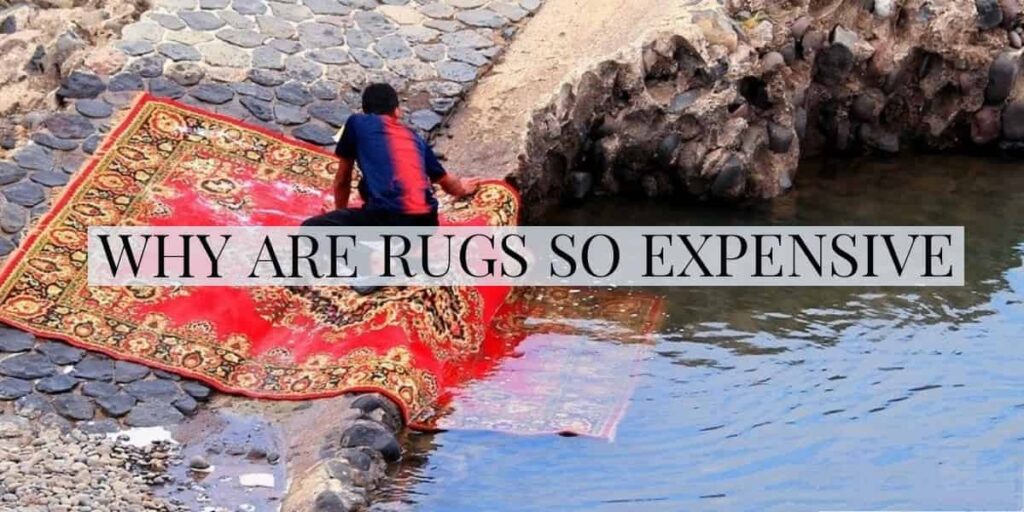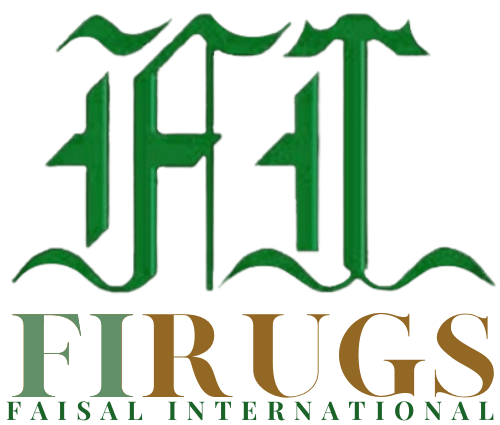
Table of Contents
5 REASONS WHY RUGS ARE SO EXPENSIVE
Why are rugs so expensive?
This is one of the most frequently asked questions that many ask. We will get to all that and also cover the question “why are Persian rugs so expensive”. Well, we will cover both questions including a bonus question as to how much to spend on a rug.
Here Are 5 Reasons Why Are Rugs So Expensive
- Labor Intensive Work
- Expensive Materials
- Weaving Cost
- Production Process
- Transport and Import Taxes
Labor Intensive Work
The amount of time spent on any job directly reflects its cost of production. Right, isn’t it? It is the same with the manufacture of area rugs. The production of handmade rugs is one of the most laborious jobs in the world. Why not, after all, humans are doing spider work.
- Fiber to thread: Before dying the fiber, it is first spun to the thread. Some threads are still spun by hand and consume a lot of time and energy. The whole process is not that expensive, but it does count in the cost of the carpet.
- Color Dying: Dying is another integral part of carpet making. This is where the thread or the yarn gets the colors. The cost of color is expensive. Blue color dye is the most expensive and so are other colors, not cheap either. If you have not seen the wool, they are really exhausting work. Color dying takes place in large containers fed with tons of expensive coal or natural CNG gas.
- Weaving: Among all the carpet manufacturing processes, weaving is the most important part. It is the slowest, most intensive and most expensive part of manufacturing. This process can alone tell why are rugs so expensive.
The true heroes of carpet making are the craftsmen who weave them. They sit all day in robotic motion with fixed eyeballs working with tremendous patients. - Wash: The wash after carpet development is another cost that adds to the rug. Washing takes use of bleach and other chemicals to bring out great looks to the rug. All of these take cost into account and are time consuming.
Expensive Materials
Various materials are required for making rugs. Taar, Aanga, Tharri are materials that are used in the warp and weft. Some of the types of fibers that make good rugs are:
- Wool: The main material, wool, is the one that is most in demand in carpets. Wool and silk are the main fibers, which is why are rugs so expensive. There are different grades of wool for making carpets. The cheapest wool can cost up to $ 6.00 per kilogram. New Zealand wool, the highest wool quality can cost up to $ ___.
- Silk: real or pure silk is the most expensive fiber. Real silk fiber can cost around $ 50.00 per kilogram. Although some real silk alternatives such as viscose or bamboo silk cost less, however, after all, their cost is high in their entirety.
- Natural fibers: cotton, sisal, jute, and seagrass are less expensive and have their own pros and cons.
- Synthetic fibers: some materials like polyester and nylon are not so expensive rugs.
Weaving Cost
Among all the carpet manufacturing processes, weaving is the most important part. It is the slowest, most intensive and most expensive part of manufacturing. This process can alone tell why are rugs so expensive.
The true heroes of carpet making are the craftsmen who weave them. They sit all day in robotic motion with fixed eyeballs working with tremendous patients.
Wash – The wash after carpet development is another cost that adds to the rug. Washing takes use of bleach and other chemicals to bring out great looks to the rug. All of these take cost into account and are time-consuming.
Production Process
The long production process should be more stressed when evaluating the cost of carpets.
All rugs handmade like flatweave, handloom, shag, etc takes time in its production. Exceptionally hand-knotted oriental Persian rugs really cost a lot. Why? This is simply because knotting thousands of yarns is not a quick or easy job. We will discuss ahead why Persian rugs are so expensive
Transport and Import Taxes
The carpets are packed in rolls. Each roll is about the size of the width of the mat and is heavy. This includes higher handling and transportation charges. Especially shipping by air rugs can be very expensive.
Of all the other reasons on why are rugs so expensive, import tariffs also play a role. Import duties are not applied in the same way in all countries. Bilateral relations between countries can also have a good or bad effect on the price of carpets.
Why Are Persian Rugs So Expensive?
Among all other rugs, Persian rugs are the most expensive. A real Persian rug is made from wool, silk, or both. Did you know that hand-knotted Persian rugs are a great investment? You will have learned it when you know what these rugs are worth.
Hand Knotted
The main meaning of Persian rugs is that they are hand knotted. Persian oriental rugs are always knotted by hand, which means thousands of knots are tied to make these rugs.
Quality
The quality of the Persian rugs determines the time it would take to manufacture the carpet. The higher the quality, the more time and cost is added to it.
By the term “quality”, it refers to high-quality wool and the number of knots in the carpet. The more the number of knots denote the higher the quality of the carpet.
A Persian rug size 6’x9′ in quality 5/32 can take 2-3 months to complete.
Vegetable Dying
A real Persian rug is vegetable dyed and not chemically treated. Vegetable dyes are those dyes extracted from nature. These natural color dyes can be really expensive as they are extracted from many different flowers, roots, spices and other natural resources.
Expensive Finish
Washing and trimming the carpet is not the end of carpet manufacturing. There are still working parts for the finest look of the rugs. Each step again increases the cost of producing the rugs.
The finish includes: carpet binding, leveling and braiding of the fringes and color adjustment in places with slight color variations.
According to Indian laws, rugs should only be packed with jute for wrapping and not plastic. Well, jute is more expensive than plastic, so an additional cost is raised towards the mat.
Labor Shortage
The shortage in the availability of weavers is another factor why Persian rugs are so expensive. Unfortunately, weavers find it very difficult to survive and live on woven rugs. These days there are several options you have to move to bigger cities and earn more with less effort. Those who still weave charge more know the value of their great work of art.
How Much To Spend On A Rug?
Not all types of rugs are expensive. If you’re on a tight budget, go with machine-made rugs. Machine-made rugs are cheaper than handmade rugs. It is definitely because there is little or no work directly involved in weaving them.
The cost of any carpet depends on the type of carpet, its weaving method and the fiber used in its manufacture.
Remember that every handmade rug is not a hand-knotted rug, but every hand-knotted rug is handmade.
The hand-knotted area rug in real silk fiber (or wool blend) is the most expensive rug.
New Zealand wool is the finest wool followed by semi-combed wool and Argentine wool.
Others that are handmade rugs like flat weave, lint, handloom, leather rugs are cheaper options.
Some synthetic fiber rugs in polypropylene, polyester are some cheap rugs, to name a few.
Question To Ask Before Buying
Now that you know why are rugs so expensive, write down the question before buying.
- What is the material in the rugs?
- What is its quality (number of knots per inch)?
- What is the origin of the carpet?
- Is the color natural dye or chemically dyed?
- What is the age of the carpet?
Compare the price with other stores, including the online store.
When ready to buy if you are unsure of the market price of your carpet, contact us for a complete guide.
